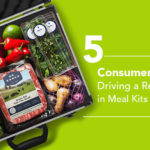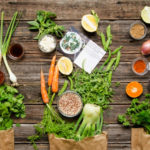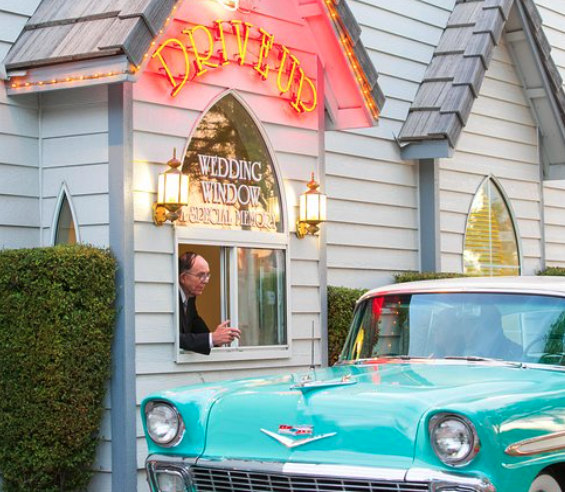
Consumer Demand for Convenience Knows No Bounds
Consumers have come to expect convenience in all their dealings–the ‘frictionless transaction’ in online shopping parlance. I recently visited Las Vegas for the first time since before the pandemic. I was driving from downtown to the Strip when I passed the section where all the wedding chapels are. I noticed that one of them now has a drive-thru window. Yes, you can now make a lifetime commitment without getting out of your car. Presumably, this was started as a health precaution to reduce COVID-19 transmissions. But a subsequent online search showed that there are multiple drive-thru wedding chapels, and they aren’t all in Las Vegas either.
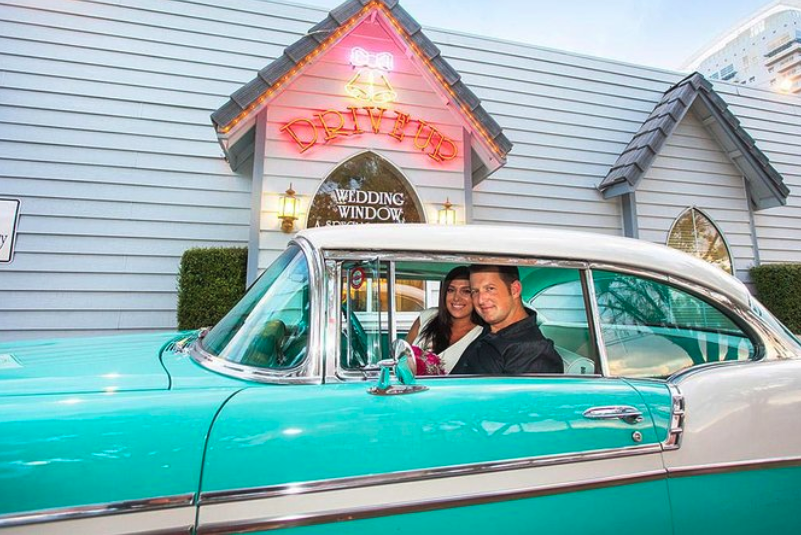 Source: Viatour
Source: Viatour
The supermarket industry, long used to dealing with the vagaries of the consumer mindset, is meeting these consumer demands in a number of ways. And it’s not just convenience consumers are demanding. In fact, some of their requests are difficult to reconcile with each other. For example, consumers are increasingly concerned about sustainability. However, they still want the option of overnight delivery they can get from shopping online, even if it generates masses of packaging that is clearly not helping the planet. Let’s look at a couple of recent developments to illustrate what today’s supermarket operators are doing to keep their customers happy.
Innovations In Convenience Improve Shopper Loyalty
Home delivery keeps becoming more important. It is becoming clearer every day that the end of pandemic restrictions will not trigger a wholesale return to pre-pandemic shopping patterns. Annual online grocery sales totaled $97.7 billion in 2021. And a survey by Chicory showed that 72% of shoppers had purchased groceries online in the last 90 days. January 2022 data shows online grocery orders being picked up in-store (or in the store’s parking lot) growing and accounting for almost half of all orders, home delivery declining slightly, with only ‘ship-to-home’ (FED Ex, UPS, etc.) declining significantly.
Walmart evidently got the memo. They are expanding in-home delivery from 6 million homes to 30 million by the end of 2022. Their In-Home option allows Walmart associates to use a one-time access code to pair with a smart access lock so they can leave groceries inside the customer’s home or garage. Customers are notified and can see the delivery via a camera on the associate’s vest. If that’s not convenient enough, Walmart is also offering a two-hour express service. And to get their sustainability ticket punched too, Walmart announced that their delivery fleet would consist of all-electric vans.
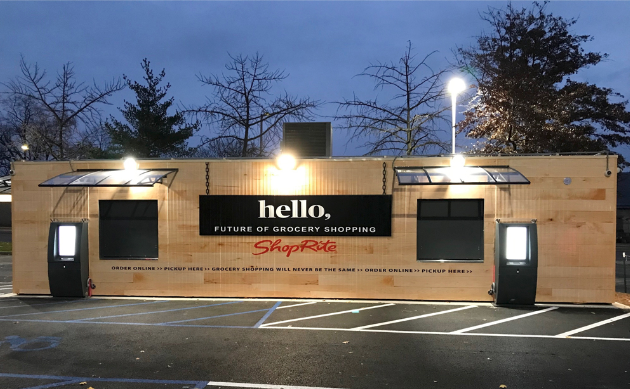
Taking a different tack, Shoprite announced “the future of grocery shopping.” They are testing a Quick Collect pod that allows shoppers to retrieve their online order automatically and without the involvement of store personnel. The temperature-controlled unit holds refrigerated and frozen foods as well as room temperature groceries. Customers receive a QR code when their order is ready for pickup that they use to access the locker holding their groceries.
In a sign of potential future problems, however, Instacart announced a cut in its valuation from $39 billion to $24 billion. Instacart is clearly not in immediate trouble (they have $1 billion in cash on hand), but as more grocers expand their own home delivery options, Instacart sees the need to come up with new offerings. Grocery stores complain that it is hard for them to make a profit on Instacart sales after their fees are deducted, so Instacart is offering them expanded software analytics. There is also some concern from grocery operators that Instacart will eventually go direct to manufacturers and cut out the supermarkets altogether. And to keep up with customers’ demands, Instacart is instituting a pilot program to deliver groceries within 15 minutes from small fulfillment centers.
However, the small fulfillment centers are also getting pushback from NIMBYs. Tom Ahearn, a partner at Public Affairs firm Five Corners Strategies sums up the conflicting consumer demands succinctly. Everyone loves to see delivery vans “show up in their driveway the day after they ordered the new fishing reel for their son,” he says, “but everyone wants to make sure that the warehouse from which it’s coming is one town over.”
Other operators continue to offer convenience to their customers in multiple ways. BJ’s Wholesale rolled out a subscription service after six months of testing. They offer 12 free deliveries over a one-year period for $55 or unlimited for $100. Kroger expanded its partnership with Ocado to offer deliveries in areas that do not have physical Kroger grocery stores, adding Texas and Alabama to their original Florida footprint. And Whole Foods opened their second ‘just walk out’ store in Sherman Oaks, CA. The store uses technology similar to Amazon Fresh stores to automatically tally customers’ purchases so they can avoid checkout lines altogether. Customers can access the feature via a QR code in the Whole Foods app, entering a credit card linked to their Amazon account, or using an Amazon One palm reader.
And Kroger subsidiary Ralphs partnered with Kitchen United MIX to offer fresh and fully prepared, on-demand meals from participating restaurants via a ghost kitchen in the Westwood, CA Ralphs. Customers can have the meals delivered or pick them up. Other locations will be added soon.
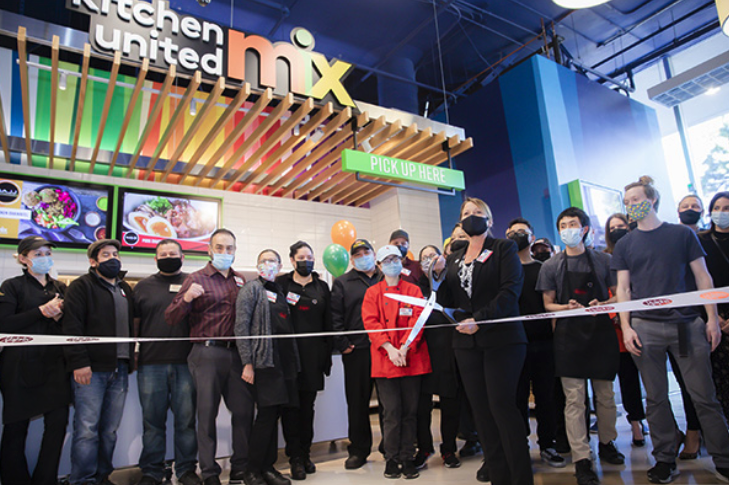
Sustainability Has Become A Brand Advantage
Sustainability is another area where consumers are demanding action from supermarket operators. And the consumers for whom sustainability issues are most important are also the most valuable customers. Higher-income consumers ($100k +) are more likely to seek out environmentally aware companies than those making less than $25,000 a year, 58% vs 39%. And younger customers (18-29) are far more likely than customers 60+ to feel that way, 63% compared to 28%. While almost half (49%) of shoppers say they are willing to pay more for sustainable products, that number rises to 64% amongst millennials. Disturbingly, over two-thirds of consumers say retailers could improve their sustainability efforts, and more than half believe grocers are not making genuine efforts to improve their sustainability credentials.
Amazon Fresh is definitely going the extra mile to deliver on its sustainability promises. Their new store in Seattle is pursuing a net-zero carbon certification. Amazon is using its AWS Professional Service Sustainability practice to track their progress. Stephanie Landry, VP of Amazon Grocery, says, “We know many customers are prioritizing sustainability in what products they buy and where they choose to shop. With our newest Amazon Fresh store we are taking the next step on our path to becoming a net-zero carbon business by 2040, and we welcome customers to experience this firsthand while shopping with us in this store.” The store uses a CO2-based refrigeration system and electricity sourced from the company’s renewable energy projects.
Meijer is looking to partner with suppliers to up their sustainability credentials. They are holding a virtual event this month to meet with vendors to source certified sustainable products.
Many CPG manufacturers are looking to up their sustainability commitments too. Several companies have pledged to become carbon-neutral by 2050, including Mondelez, Nestlé, Mars, Unilever, and Del Monte Foods. They are looking at numerous improvements across the supply chain to achieve this goal, including automation, renewable energy, transportation efficiency, regenerative agricultural practices, and packaging innovation.
Bumble Bee Seafood Company has taken steps to make its packaging more sustainable and has added a burst to let consumers know. They have replaced shrink-wrap with 100% recycled and recyclable material on 23 SKUs.
 Nestlé has announced a goal of making all of its packaging fully recyclable or reusable by 2025. General Mills Nature Valley has adopted fully recyclable plastic wrappers, and Mars has started using biodegradable plastic wrappers for Skittles. Molson Coors is spending $85 million to switch over 30 brands from plastic 6-pack rings to cardboard sleeves.
Nestlé has announced a goal of making all of its packaging fully recyclable or reusable by 2025. General Mills Nature Valley has adopted fully recyclable plastic wrappers, and Mars has started using biodegradable plastic wrappers for Skittles. Molson Coors is spending $85 million to switch over 30 brands from plastic 6-pack rings to cardboard sleeves.
The supermarket industry knows it has to be more agile than ever in responding to consumer demands. And as hard as it is to keep customers happy, today’s grocery industry is doing just that. In fact, five of the top ten brands ranked for consumer trust are grocery brands, with Costco, Kroger, Publix, Aldi, and Trader Joe’s making the list. These grocers know that they have to make a lifetime commitment to their customers if they want to earn their loyalty. And they know they are going to have to go the extra mile to do so.

